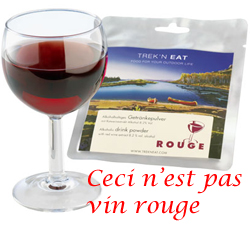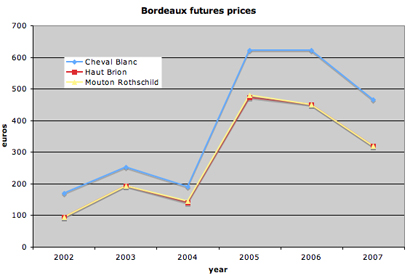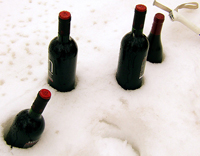Dr Vino's wine blog
wine talk that goes down easy
High stakes and alleged fakes – Koch sues Kurniawan
 William I. Koch, the billionaire wine collector at the heart of the story The Billionaire’s Vinegar (buy on amazon), has taken yet more legal action in the world of fine wine. In an extensive complaint lodged in Los Angeles court last week, Koch makes some significant allegations. The complaint is available here as pdf and it makes for great reading. In the name of fairness and balance, these are simply allegations and it will be interesting to see how it all plays out. Whether or not you are into the fine and collectible wine market, these are fascinating developments as the cast of characters expands beyond those in The Billionaire’s Vinegar.
William I. Koch, the billionaire wine collector at the heart of the story The Billionaire’s Vinegar (buy on amazon), has taken yet more legal action in the world of fine wine. In an extensive complaint lodged in Los Angeles court last week, Koch makes some significant allegations. The complaint is available here as pdf and it makes for great reading. In the name of fairness and balance, these are simply allegations and it will be interesting to see how it all plays out. Whether or not you are into the fine and collectible wine market, these are fascinating developments as the cast of characters expands beyond those in The Billionaire’s Vinegar.
Koch alleges that five bottles he purchased through Acker Merrall & Condit were fake. The bottles were: 1947 Château Pétrus, a bottle of 1945 Comte Georges de Vogüé Musigny Cuvée Vielles Vignes, 1949 Lafleur, and two bottles of 1934 Domaine de la Romanée-Conti. Koch paid Acker $77,925 for the five bottles, purchased through private sales and auctions. He now claims they all came from Kurianwan but that source was not stated at the time of purchase.
Koch maintains that Kurniawan was the source of two Acker auctions in 2006 hailed only as from “THE cellar.” The two auctions grossed over $35 million. The complaint points to this LA Times profile of Kurniawan, which describes his preferred wardrobe is jeans and gray tshrits but that he has a Bentely and a Ferrari. The article also says that he got into wine only in the year 2000 but had already amassed a cellar of 50,000 bottles and that, “Since he started buying, prices for rare wine have skyrocketed.”
In reference to the two 2006 auctions, the filing says, “Buying and selling the same wine at the same time could also be an effort to manipulate wine prices, a scheme to pump up the price and then dump wine into the inflated market.”
Koch’s filing also states that Kurniawan owed Acker and Acker clients $10.4 million as of a November 2008 court proceeding. Acker accepted fine art and wine as collateral. Emigrant Bank also lent Kurniawan $3 million, according to the filing, and sued Kurniawan to get it back.
The filing also elaborates on sales of magnums of 1982 Le Pin and 122 bottles of red Burgundy from Domaine Ponsot. However, both sets of wines were withdrawn after winery principals raised doubts about the authenticity of the wines. Jancis Robinson has since called Laurent Ponsot “Burgundy’s Sherlock Holmes.” But where Kruniawan got those bottles remains unknown.
And to think that the movie rights for The Bilionaire’s Vinegar have already been sold! Looks like they’d better get working on the sequel already…
Red wine powder, fraud, art exhibit, Lance – sipped and spit
 SIPPED: Desperation!
SIPPED: Desperation!
The Swiss water purification company, Katadyn, has a wine-like product for non-discriminating, thirsty trekkers. They market a red wine powder that hikers can take on the trail, add some of their purified water, and voila, wine! Only they won’t call the 8% alcohol drink “wine,” mostly because the association of Chianti producers has complained. Katadyn’s defense: “We are well aware that we’re not even permitted to call the product wine. No grapes were used in its production, it’s simply a product that is flavored to taste like wine.” Coming next year: powdered beer. [Der Spiegel]
SPIT: family relations
Gary Heck of Korbel has sued his daughter, Richie Ann Samii, for defamation in postings on Craigslist. She denies the allegations in the Sonoma Press Democrat. The two are also involved in legal maneuverings over a multimillion dollar stake in the company.
SIPPED: fraud
Why do the empty wine bottles that fetch the highest prices on eBay correlate with those that are the most expensive and presumably authentic when full? An academic study (in progress) suggests counterfeiting. [Freakonomics]
SPIT: fraud
Researchers at the University of Bourgogne in Dijon have developed a way to track the barrels used for aging a wine: using a mass spectrometer. Each forest has an identifiable fingerprint for its lumber and that can be traced for 10 years after leaving the barrel. The researchers suggest that it could prevent fraud in wine, passing off a less expensive wine as a pricey one. But perhaps its best use might be to track whether the barrels came from the same pricey forest they claim to be from–or a low cost competitor. [New Scientist]
SIPPED: Wine paraphernalia on display
The Art Institute of Chicago has a two-month exhibit called “A Case for Wine: From King Tut to Today.” They describe the exhibit as the first of its kind at “tracing this beloved libation’s surprisingly significant role as a stimulus and source of artistic endeavor.”
SIPPED: red wine in the Tour
And if you were third overall in the Tour de France, what would you imbibe the evening before the rest day? Check out Lance Armstrong’s tweet for his answer: “Made it to Limoges…Gonna have dinner, drink a glass of red wine, talk to my kids, and crash out!!” Hopefully it was the real deal and not the powdered “wine.”
Bordeaux futures, wine investment, waste, insurance – sipped and spit

SPIT: Bordeaux futures
In recent years, Bordeaux futures ran up to tremendous highs (see above chart above for three top chateaus ex-cellars; compiled from data from The Times of London). Now, they may be poised to fall back to 2002 prices, which is what British buyers told the Times they were willing to pay. A Bordeaux insider told me recently that the first growths really should not cross the €100 threshold. But he admitted that they probably will after they hear nice things about their wines at the en primeurs tastings in early April.
SIPPED: Bordeaux past
In a blast from what seems a distant past, a new investment fund for wine is opens this month with allegedly 15 to 20 million pounds of assets. Investors will need to meet the 500,000 pound minimum for the closed-end fund. Send checks to Richmond Park partners Steven Berger and Pascal Maeter who will manage the Lunzer Wine Investments Institutional Fund. [Bloomberg]
SIPPED: industrial waste over Givry
The Burgundy village of Givry has to contend with plans for a new industrial waste treatment plant on the outskirts of town. Last year’s mayoral campaign was fought largely around this issue with an anti-plant activist winning town hall. But the regional authorities later approved the plant, winemakers sued, and now a tribunal has suspended the approval. Score one for the winemakers! Check out the story at washingtonpost.com.
SPIT: excise tax
California’s legislature approved a new budget without increasing the excise tax on wine.
SIPPED and SPIT: wine blogs
The wine blog award winners have been announced. Alas, this blog is not among them. But thank you for your clicks of support! And hearty congratulations to the winners! [Fermentation]
SIPPED: insurance!
A “Master of Coffee” (not Mister Coffee) in England has insured his tongue for £10 million ($13.95 million) via Lloyd’s of London (not to be confused with the newly nationalized Lloyds Banking Group, ahem). Take that Robert Parker–his policy is 14 times bigger than your policy! [BBC via sdelong]
Defies all odds and OTBN
From site reader Shari: file under “defies all odds.”
 “I had one of those crazy wine experiences last week. Ancient bottle (1991) of Los Vascos can from Chile. Probably bought it in 93 when it was about $5. It got dragged from apt to apt through working cellars and non. Then dragged it up to Vermont where it happily sat in a downstairs closets probably fairly constantly at 55-65. Then hauled it out at Christmas, stuck it in a little snow to chill ever so slightly from the hot kitchen. Brought it in, never opened it, let it sit in the hot kitchen til last week. Opened it knowing that I had no right to expect anything but vinegar. it was delicious. What I didn’t drink, I baked into wine biscuits. Good story for the recession and in advance of Open That Bottle Night!”
“I had one of those crazy wine experiences last week. Ancient bottle (1991) of Los Vascos can from Chile. Probably bought it in 93 when it was about $5. It got dragged from apt to apt through working cellars and non. Then dragged it up to Vermont where it happily sat in a downstairs closets probably fairly constantly at 55-65. Then hauled it out at Christmas, stuck it in a little snow to chill ever so slightly from the hot kitchen. Brought it in, never opened it, let it sit in the hot kitchen til last week. Opened it knowing that I had no right to expect anything but vinegar. it was delicious. What I didn’t drink, I baked into wine biscuits. Good story for the recession and in advance of Open That Bottle Night!”
Well, clearly I didn’t get this comment up before OTBN, which was this past Saturday. John Brecher and Dottie Gaiter of the WSJ created this tremendous, blog-style-before-there-were blogs interactive event, now in its tenth edition, to encourage people to open a special bottle that they had kept putting off opening. Unfortunately, it wasn’t in the cards for me to participate this past Saturday (had a cold); what did you uncork?
Screwcaps, scores, riesling, the Loire, Cali cab: John Gilman part two
 We’re back with Part Deux of our interview with John Gilman, author of the newsletter A View from the Cellar (part one is here). John has offered a free issue from his backlist to any Dr. Vino reader so surf on over to his site and check it out. In this part of the Q&A, I had intended John to give a quick thumbs up or thumbs down on a number of hot-button issues in the wine world today as well as some things that I’ve heard him express unusual views about. In case you thought you were done gorging during the holidays, you can now feast on John’s 7,000+ words in this second part. So buckle up and get ready to hear his thoughts on what’s wrong with Riesling from Austria and Australia, screwcaps and their problems, the Loire, California cab then and now, indigenous yeasts, roto-fermenters, small oak barrels, wines over 14% alcohol and why he uses scores!
We’re back with Part Deux of our interview with John Gilman, author of the newsletter A View from the Cellar (part one is here). John has offered a free issue from his backlist to any Dr. Vino reader so surf on over to his site and check it out. In this part of the Q&A, I had intended John to give a quick thumbs up or thumbs down on a number of hot-button issues in the wine world today as well as some things that I’ve heard him express unusual views about. In case you thought you were done gorging during the holidays, you can now feast on John’s 7,000+ words in this second part. So buckle up and get ready to hear his thoughts on what’s wrong with Riesling from Austria and Australia, screwcaps and their problems, the Loire, California cab then and now, indigenous yeasts, roto-fermenters, small oak barrels, wines over 14% alcohol and why he uses scores!
German Riesling
To my mind this is clearly the most singularly misunderstood and underappreciated region for great wines in the world. Read more…
John Gilman – View from the Cellar – On collecting and collectible values
 John Gilman is one of the people who I have enjoyed getting to know in 2008. He started his career in wine retail, later worked as a sommelier with a soft spot for Burgundy, and now has embarked on the foolhardy notion of writing a bi-monthly wine newsletter, A View from the Cellar. Except maybe he’s not so foolhardy since, unlike a blog, he actually charges for his newsletter! Started in 2006, John has quickly won the respect of collectors and the people in the trade. He’s often provocative and not afraid to call things as he sees them; one of my favorite parts of his newsletter is the “roadkill” section where he discusses bottles he’s tried recently that were over the hill, mostly prematurely since they were made to attract attention in their youths but have failed to mature.
John Gilman is one of the people who I have enjoyed getting to know in 2008. He started his career in wine retail, later worked as a sommelier with a soft spot for Burgundy, and now has embarked on the foolhardy notion of writing a bi-monthly wine newsletter, A View from the Cellar. Except maybe he’s not so foolhardy since, unlike a blog, he actually charges for his newsletter! Started in 2006, John has quickly won the respect of collectors and the people in the trade. He’s often provocative and not afraid to call things as he sees them; one of my favorite parts of his newsletter is the “roadkill” section where he discusses bottles he’s tried recently that were over the hill, mostly prematurely since they were made to attract attention in their youths but have failed to mature.
To give you a flavor of his preferences and picks, I asked him several questions via email. I broke it up in to two postings. In this first posting, John discusses what would be in his cellar if he were starting collecting today, what he drinks at home on a Tuesday night, the most underrated wines for aging, where Lafite 2005 will be in five years, and what would be his “desert island wine.” Onward!
If you had no collection and were going to put $1,000 into, say, at least two cases of wines available now for drinking 10+ years from now, what wines would you include? Read more…
This fall, some of the best wine values might be at auction
 “I guarantee you all these prices will be significantly higher this time next year,” John Kapon, president and auctioneer at Acker, Merrall is reported to have said between bids at an auction last December. The buyers who paid $8,000 for six bottles of the ’61 Dom Perignon and $22,000 of for eight bottles of the ’66 Cristal might be wondering if that was a money-back guarantee.
“I guarantee you all these prices will be significantly higher this time next year,” John Kapon, president and auctioneer at Acker, Merrall is reported to have said between bids at an auction last December. The buyers who paid $8,000 for six bottles of the ’61 Dom Perignon and $22,000 of for eight bottles of the ’66 Cristal might be wondering if that was a money-back guarantee.
Prices of all kinds of assets have declined precipitously since last December. Wine appeared somewhat immune as recently as September but evidence is now emerging that prices for collectible wines are entering a correction after many years of strong growth. The Liv-ex 100 Fine Wine Index fell 12.4 percent in October.
A close observer of auctions told me yesterday that two recent sales only sold 35 and 43 percent of lots. And some lots are going for well below the low price estimate. At another auction, someone else told me that a case of 1998 Grand Cru Chablis sold for $60. Even though there’s a risk of premature oxidation with that wine, $5 a bottle certainly seems like it’s worth a flier. Such a low selling price indicates that there was no reserve.
While many shops may have locked in higher costs, making them unwilling or unable to discount, some specialty shops do broker private collections too and can have faster turnarounds than auction houses. Provenance is always an issue with mature wine, so feel free to ask where the wines came from.
But some sellers at auction may be eager to liquidate making the secondary market may be the best place for wine deals this fall. Of course, if the global economic malaise continues into next year or beyond, declines in fine wine prices could continue. So you may not want to step in and catch too many falling magnums.
Some upcoming auctions: Zachys, Nov 6-8; Acker, Merrall Nov 7; Christie’s Nov 17 and 21; Sotheby’s Nov 22; Hart Davis Hart Dec 5.
Wine auctions, investments, strategies – Charles Curtis of Christie’s
 Master of Wine Charles Curtis joined Christie’s auction house this summer as head of the Wine Department in North America. Trained as a chef, he entered the wine trade in 1994 and most recently was with LVMH. I caught up with him via email.
Master of Wine Charles Curtis joined Christie’s auction house this summer as head of the Wine Department in North America. Trained as a chef, he entered the wine trade in 1994 and most recently was with LVMH. I caught up with him via email.
Christie’s Wine Department had $71 million in sales worldwide last year, the bulk coming in Europe. On November 29, they will resume live auctions in Hong Kong. For the complete calendar, see the Christie’s Wine Department web site.
1. How is the financial turmoil affecting the fine wine market?
Like all industry leaders, Christie’s is watchful of the unfolding situation in the financial markets, Read more…



